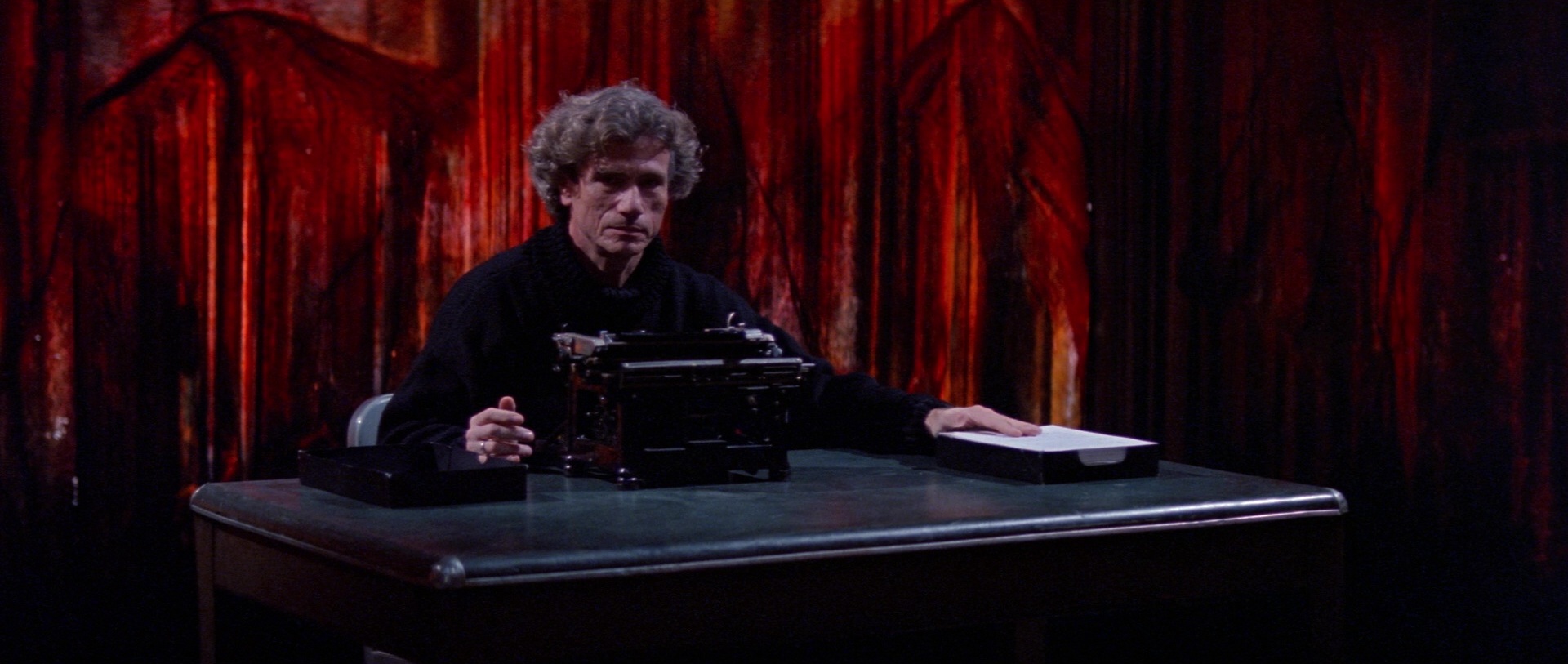He Wrote Me This Way — "In the Mouth of Madness" (1994)
As a budding preteen writer, I wanted to be Sutter Cane.
Something about having legions of crazed fans, so bloodthirsty for your new work that they could be driven literally mad, appealed to friendless, lonely me. Although I wrote a lot in my youth, most of my stories back then were knockoffs. Amalgamations of whatever I was reading at the time. Kind of like Sutter Cane, whose interconnected novels resemble the sprawling universe of King’s Maine, with a Lovecraftian underbelly of ancient monsters who once unleashed will surly catalyze the apocalypse—with the only barrier standing between mankind and a real-life tentacle-filled Armageddon being a hunk of gooey, pulsating wood.
Cane’s writing fuels these unholy evils. They feed on the fear and paranoia his words conjure. Translated into eighteen languages, over a billion copies sold worldwide, Sutter Cane is the most widely read author of the twentieth century. Because his themes speak to people; his tales are gospel. The problem with religion, Cane says, is “no one’s ever believed it enough to make it real.” Unlike his work, of course. Due to his followers’ ardent fanaticism, his horrors, along with their locale of Hobb’s End, have been willed real—depending upon your definition of “real.”
In the Mouth of Madness spends a lot of time debating this very question of reality vs fantasy. “A reality is just what we tell each other it is,” says Linda Styles, Cane’s editor. The sane and the insane could very easily switch places, after all, if the insane became the majority. So too could the strange, or queer, become commonplace if allowed to flourish.
It’s no coincidence that an orthodox church is the edifice used to keep these ancient abominations at bay. Religion has a long history of policing human behavior, of obtaining “discipline through fear,” of quashing what it considers unusual. Cane’s oeuvre has an effect on a certain malleable fraction of his readership. His novels release something from deep within people. And his influence grows stronger with each publication, with his forthcoming volume—entitled “In the Mouth of Madness”—being the most puissant of all.
Sam Neill’s John Trent plays the skeptic, resisting for as long as he can Styles’ belief in the almighty power that Cane’s books have. He’s the straight man. Trent is somewhere between Humphrey Bogart’s Philip Marlowe and Jack Nicholson’s Jake Gittes. An insurance fraud investigator, Cane’s publisher sends him and Styles off to find Cane, who has seemingly gone missing. Through bizarre happenstance, the two wind up in Hobb’s End, a town amid a battle against good an evil.
Given her new proximity to Cane’s mecca, Styles begins to change, incrementally. Her darker side rises—the side society has been suppressing. Julie Carmen is a performer who speaks with her entire body. A dancer and choreographer in real life, even when Carmen stands still, she’s completely alive, making Styles’ evolution from buttoned-up big city editor to sanguineous disciple all the more interesting. There’s a confidence to her physical presence.
Neill, though, is the actor with the greater emotional depth. He’s a bold performer with a range I wish directors would take advantage of more often. Since the film is told largely in flashback, when we first meet Trent, he’s crazed and in the process of being institutionalized. For what, we’re not sure yet. Enter a psychiatrist, to hear Trent’s story of how he went from rational gumshoe to paranoid madman. In several scenes, Neill must convey the ghastliness of what he sees, since the audience does not.
John Carpenter wisely shows us less than what a less confident director might. He knows, as H.P. Lovecraft did, that the real horror lies in the imagination, the unknown. He also knows he has a budget. So we get flashes of the creatures, of the bloodshed. Enough to entice our minds, but not prolonged enough to paint a vivid portrait. Thus Neill acts as his conduit. And by maintaining the focus on Trent, Carpenter invites the audience along on Trent’s decent into madness as he flees Cane’s nightmarish reality.
Of course, nightmarish is relative. What may appear frightening or blasphemous or unnatural to some may be perfectly innate to others. That’s another, albeit subconscious, reason I wanted to grow up to be Sutter Cane. Unbeknownst to me, my early writing also fueled doom monsters, undulating away in the depths of my psyche, growing stronger with each homoerotic detail.
It’d be years into adulthood until my throbbing gateway would give way to an army of creatures, as it were, and help me accept that I’m a gay man. Like Trent, I rejected the truth and ran at first, fearing the worst. (We can’t all embrace the darkness impulsively, like Styles.) Now, I not only own my reality, I consciously use my fiction to build new fantastical worlds for me to explore myself further—and for others to find themselves, too. That’s the intent, anyway.
To a lonesome and weird young me, there was something beguiling about the idea of growing up to become a cool, reclusive artist. I don’t know if I’m quite that today. But, before I even had the ability to recognize it, I found something inherently queer about Sutter Cane and his abyss-sized, ahem, closet of unstoppable beasts. And I still do—
Uh oh, you’ve read to the end. There’s no going back now! Welcome…







